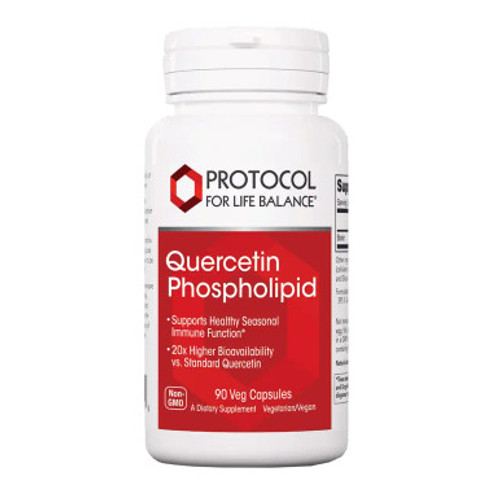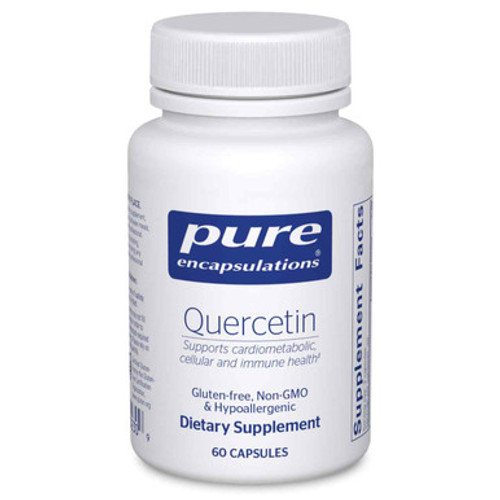Quercetin UltraSorb 90c - Pure Encapsulations
Cardiometabolic Health and Metabolism
- Supports healthy mast cell stabilization and immune health*
- Highly bioactive flavonoid offers antioxidant support for cellular health*
- Provides 300 mg of QuerceFit® quercetin phytosome per capsule
- enhanced-absorption and bioavailable quercetin
(Quercetin and sunflower phospholipid complex)
(standardized to contain 34% quercetin)
GMO Free, Vegan, Vegetarian
- Quercetin is derived from Japanese pagoda tree (Sophora japonica) flower
- Phytosome phospholipids are sourced from sunflower
- Hypoallergenic plant fiber is derived from pine cellulose
- Ascorbyl palmitate is derived from corn dextrose fermentation and palm oil
Verifiable Science
Quercetin UltraSorb contains the patented QuerceFit® quercetin-phospholipid complex forenhanced absorption and bioavailability. The proprietary phytosome technology combines quercetin from Sophora japonica flower extract and phospholipids from sunflower in a 1:1 ratio, promoting resistance to degradation in the digestive tract and efficient absorption across membranes. A randomized crossover human pharmacokinetic study compared QuerceFit® with regular quercetin and found the phytosome improved the bioavailability of quercetin by 20-fold.1 Quercetin is a polyphenolic flavonoid known to exhibit cellular and immune-moderating activity. Research suggests that quercetin acts as a SIRT1 inducer to promote cellular regulation and autophagy, the natural process of degradation and recycling of cellular components to promote renewal.2,3 It also increases the body’s antioxidant capacity in part by regulating levels of glutathione.4,5 In a pilot trial involving adults, supplementation for 30 days with 250 mg or 500 mg QuerceFit® quercetin phytosome supported antioxidant defenses and helped support respiratory function and nasal comfort.6 Preliminary research suggests that quercetin helps to stabilize mast cells and moderate the release of immune mediators.7-9 ‡
References
1. Riva A, et al. Eur J Drug Metab Pharmacokinet. 2019; 44(2): 169–177.
2. Nieman DC, et al. Med Sci Sports Exerc. 2010 Feb;42(2):338-45.
3. Rezabakhsh A, et al. Phytomedicine. 2019 Mar 15; 56():183-193.
4. Xu D, et al. Molecules. 2019 Mar; 24(6): 1123.
5. Riva A, et al. Minerva Med. 2018 Aug;109(4):285-289.
6. Cesarone MR, et al. Minerva Med. 2019 Dec;110(6):524-529.
7. Micek J, et al. Molecules 2016, 21(5), 623
8. Weng Z, et al. PLoS One. 2012;7(3):e33805.
9. Park HH, et al. Arch Pharm Res. 2008 Oct;31(10):1303-11.






